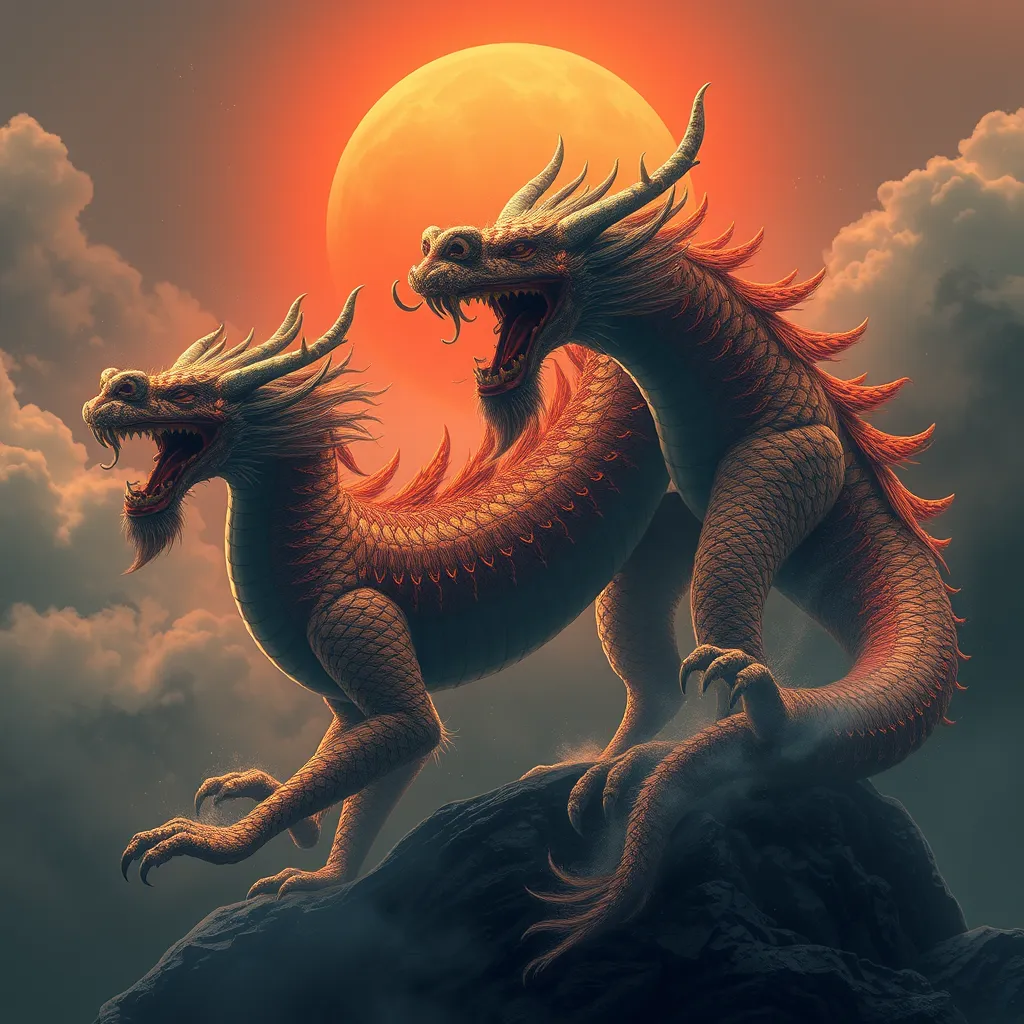The Japanese Chimera: Mythological Beasts of the Land of the Rising Sun
I. Introduction to Japanese Mythology
Japan’s rich mythological landscape is a tapestry woven from centuries of tradition, folklore, and spirituality. The country’s mythology is populated by a myriad of creatures, spirits, and gods that play crucial roles in cultural narratives and practices. Among these beings, mythical creatures hold a special place, often embodying moral lessons or serving as symbols of natural phenomena.
The concept of the chimera, often associated with hybrid creatures in various cultures, finds a unique expression in Japanese folklore. In Japan, chimeras are not merely grotesque combinations of animals but are imbued with deep symbolic significance that reflects the values and beliefs of the society.
II. Defining the Chimera: Origins and Characteristics
In mythology, a chimera is typically defined as a creature that blends the features of multiple animals, often representing chaos or the merging of different worlds. The term has its origins in Greek mythology, where the Chimera was depicted as a fire-breathing monster with a lion’s head, a goat’s body, and a serpent’s tail.
Japanese chimeras, however, carry distinct traits that set them apart from their Western counterparts. In Japanese culture, these beings often embody harmony between different elements and serve as guardians or protectors.
Common features associated with Japanese chimeras include:
- Hybrid forms combining various animals, such as the combination of a dragon and a tiger.
- Symbolism of duality, representing both destructive and benevolent forces.
- Connection to nature and the spiritual realm.
III. Notable Japanese Chimeras and Their Stories
Japanese folklore is rich with supernatural creatures known as Yōkai, many of which can be considered chimeric in nature.
A. The Yōkai: Supernatural creatures in Japanese folklore
- Kappa: A water-dwelling creature resembling a turtle with human-like features. Kappa are known for their mischievous behavior but can also be protective of rivers and lakes.
- Tengu: Often depicted with human and bird features, Tengu are skilled warriors and protectors of the mountains, embodying the spirit of the forest.
B. The Shinto pantheon and chimeric beings
- The multi-headed dragon: This creature represents power and chaos, often seen as a guardian of sacred places.
- Inugami: A dog spirit that can be summoned for protection or revenge, embodying loyalty and ferocity.
The integration of these chimeras in Japanese tales and legends highlights their importance in teaching moral lessons and explaining natural phenomena.
IV. Cultural Significance of Chimeras in Japan
Chimeras play a significant role in traditional Japanese art and literature, often depicted in paintings, sculptures, and literature as symbols of strength and protection. Artists have historically drawn inspiration from these mythical creatures, weaving them into their works to capture the imagination of viewers.
In contemporary Japanese media, chimeras continue to influence popular culture through:
- Anime: Many series feature chimeric characters, blending traditional lore with modern storytelling.
- Manga: Comics often explore themes of hybrid creatures and their relationships with humans.
- Video games: Titles often incorporate chimeric beings as characters or antagonists, drawing on their mythological roots.
The symbolism of chimeras in modern Japanese society often reflects themes of harmony, duality, and the balance between human and nature.
V. The Chimera in Japanese Festivals and Rituals
Festivals in Japan often celebrate mythical beings and chimeric creatures, showcasing their importance in cultural practices. These events can include:
- Local festivals: Many regions host festivals that honor specific chimeras or yōkai, incorporating traditional dances, music, and rituals.
- Ceremonial practices: Rituals may involve offerings to chimeric beings, seeking their protection and blessings.
Local legends play a significant role in shaping these festive events, often creating a deeper connection between communities and their mythical heritage.
VI. Comparative Analysis: Japanese Chimeras vs. Other Cultures
When comparing Japanese chimeras to those from other cultures, similarities and differences become apparent. For instance, Western chimeras, such as the Greek Chimera, often emphasize chaos and destruction. In contrast, Japanese chimeras tend to embody balance and protection.
Notable comparisons include:
- Similarities: Both cultures depict hybrid creatures that possess extraordinary powers.
- Differences: Japanese chimeras often have benevolent roles, while Western counterparts may be more antagonistic.
The global influence of Japanese chimera mythology can be seen in various forms of media and art, showcasing its enduring appeal.
VII. Modern Interpretations and Revivals of Chimera Themes
In recent years, there has been a resurgence of interest in traditional myths and creatures, leading to new artistic expressions and reinterpretations of chimeras. Artists are increasingly blending traditional techniques with contemporary styles, breathing new life into these ancient symbols.
Collaborations between traditional and contemporary artists have led to:
- Art exhibitions: Showcasing works that highlight chimeric themes and their relevance today.
- Literature: New stories and novels that reinterpret ancient tales, making them accessible to modern audiences.
VIII. Conclusion
Chimeras hold a significant place in Japanese mythology, reflecting the rich tapestry of cultural beliefs and values. Their stories continue to resonate through traditional art, contemporary media, and local festivals, showcasing their lasting legacy.
As we explore the mythological landscape of Japan, we invite you to delve deeper into the tales and traditions that celebrate these fascinating creatures, uncovering the wisdom and beauty they offer.
